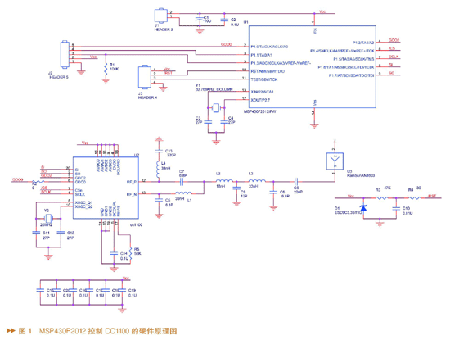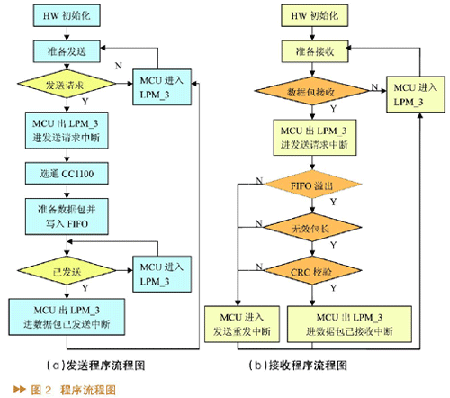|
The OP
Published on 2019-11-11 22:04
Only look at the author
This post is from Microcontroller MCU
| ||
|
|
||
- 【Posts】Active RFID Design Based on MSP430 and CC1100
- 【Posts】The difference between various chips in TI's CC series: CC2430 CC1100
- 【Posts】Application design of active RFID tag based on MSP430F2012 and nRF24L01
- 【Posts】Active RFID tag design based on MSP430F2012 and IA4420
- 【Posts】Serial communication between CC2541 and MSP430
- 【Posts】Active Bandpass Filter Design
- 【Posts】On the design of second-order active low-pass filter
- 【Posts】How to analyze and design active filters---Thank you very much! ! !
- 【Download】Design of active low-power RFID tag based on MSP430F2012 and CC1100
- 【Download】Wireless UART Experiment Design Based on CC1100 and MSP430
- 【Download】Design and development of wireless remote transmission direct reading automatic meter reading system based on MSP430 and CC1100
- 【Download】Multifunctional RFID chip CC1100 programming information! I hope you can use it
- 【Download】Design of miniaturized intelligent agricultural monitoring system based on MSP430 and RFID.rar
- 【Download】One-way audio communication program and design circuit related information based on CC1101, CC1150 and MSP430F2232.
- 【Download】TI Cup Award-winning Work - Design of Miniaturized Intelligent Agricultural Monitoring System Based on MSP430 and RFID
- 【Download】Design of low power active RFID tag based on MSP430 microcontroller
- 【Design】Category 8 High Power PoE Isolated Active Clamp Forward Converter (24V/3A) Reference Design
- 【Design】14-Channel Active Cell Balancing Battery Management Reference Design
- 【Design】Bidirectional CLLLC resonant, dual active bridge (DAB) reference design for HEV/EV on-board chargers
- 【Design】3.3V/20A, active-clamp forward converter, Power over Ethernet (PoE) IEEE 802.3bt compliant reference design
- 【Design】12V/8A Active Clamp Forward Converter, IEEE 802.3bt Compliant Power over Ethernet (PoE) Reference Design
- 【Design】5V/20A, Active Clamp Forward Converter, Power over Ethernet (PoE) - IEEE 802.3bt Compliant Reference Design
- 【Circuits】Design of super bass in active speakers
- 【Circuits】Low-power active speakers designed with TDA2822M
- 【Circuits】Design of blockchain RFID scanner based on MFRC522
- 【Circuits】Design of new intelligent flow meter circuit module based on MSP430F449
- 【Articles】Wireless UART Experiment Design Based on CC1100 and MSP430
- 【Articles】Wireless sensor network composed of MSP430 and CC1100
- 【Articles】Design of wireless transmission test system based on CC1100 and P89LPC922 microcontrollers
- 【Articles】CC1100 architecture design using programmable multi-core processor SoC system
- 【Articles】Design of CC1100 Driver Based on TinyOS
- 【Articles】Interface hardware circuit between AT89S52 microcontroller and CC1100
-
Application design of active RFID tag based on MSP430F2012 and nRF24L01
[p=30,null,left][color=rgb(34,34,34)][font="][font=Verdana][size=4][b]Thesystemusesalow-powercombinationofMSP430F2012[color=#000000]single-chipmicrocomputer[/color]andnRF24L01radiochipinhardware;thesoftwarecombinesthecharacteristicsofRFIDpo ...
-
Active RFID tag design based on MSP430F2012 and IA4420
OverviewRadiofrequencyidentification(RFID)isoneofthefastestgrowingwirelesstechnologiesinrecentyearsMostRFIDsystemsusepassivetagsthatobtainpowerfromreadersviaRFActivetagswithbatteriescanprovideawiderrangeofreadingcapabilitiesandstrongerrelia ...
-
I would like to ask the experts, how to learn the high-frequency electronic circuit course? I want to work in this field in the future.
Iworkedonhigh-frequencycommunicationproblemsinanelectronicscompetitionforayearandfounditveryinteresting,althoughsomeofthebugswereveryconfusingAlotofthethingshesaiddidn'tsoundreliable,suchassayingthatyouonlyneedtoknowtheconclusionsandyoudon' ...
- "Computer Vision PyTorch Digital Image Processing"--Overview of the book
- 【Follow me Season 2 Episode 4】Summary
- Goodbye 2019, hello 2020 + A memory of a somewhat bumpy 2019
- Watch the fun!!!
- Lingte dual output 36V buck LED driver is suitable for automotive power system
- CC4511 4-wire - seven-segment stored decoder-driver
- F2833x calls DSP function library to implement complex FFT method
EEWorld Datasheet Technical Support
-
"Cross-chip" quantum entanglement helps build more powerful quantum computing capabilities
IBM scientists have achieved "cross-chip" quantum entanglement - successfully entangled two "Eagl
-
Ultrasound patch can continuously and noninvasively monitor blood pressure
A research team at the University of California, San Diego, has developed an innovative wearable
-
Europe's three largest chip giants re-examine their supply chains
At the Electronica 2024 CEO Roundtable held just last week, the CEOs of three chip giants, Infine
- It is reported that Kioxia will be approved for listing as early as tomorrow, and its market value is expected to reach 750 billion yen
- The US government finalizes a $1.5 billion CHIPS Act subsidy to GlobalFoundries to support the latter's expansion of production capacity in the US
- SK Hynix announces mass production of the world's highest 321-layer 1Tb TLC 4D NAND flash memory, plans to ship it in the first half of 2025
- UWB is a new way to use it in cars. Can wireless BMS also use it?
- Filling the domestic gap! China Mobile, Huawei and others jointly released the first GSE DPU chip
- Samsung Electronics NRD-K Semiconductor R&D Complex to import ASML High NA EUV lithography equipment
- Apple reveals the secret of its own chip success: competitors can't use the latest cutting-edge technology
- Problems with STM32 and passive buzzer playing sound
- Embedded Tutorial_DSP Technology_DSP Experiment Box Operation Tutorial: 2-28 Building a Lightweight WEB Server Experiment
- OPA847IDBVR op amp domestic replacement
- AG32VF407 Test UART
- [Digi-Key Follow Me Issue 2] Chapter 1: Sharing on receiving the goods
- What model is this infrared receiver? Which model can be used instead? Thank you
- Selling brand new unopened ZYNQ 7Z020 FPGA core board
- The LORA module used in the lithium battery-powered water meter setting can save energy when 100 water meters are installed in one corridor.
- I would like to ask, when a port is set to RX0, is it necessary to set the input and output direction of this port?
- Why is this year so difficult? It’s even more difficult than during the pandemic. I’m 30 and facing unemployment. I’m so confused.
- Ask about the voltage regulator test question
- [Xiaohua HC32F448 Review] About Xiaohua Semiconductor's UART interrupt sending and PRINTF construction and redirection
- 【BIGTREETECH PI development board】 HDMI output test
- 【BIGTREETECH PI development board】+08. Audio test (zmj)
- [Xiaohua HC32F448 Review] +RTC electronic clock
- 有奖直播报名| 高可靠性IGBT新选择 —— 安世半导体650V IGBT
- 【直播时间】12月19日(周四)下午15:00-16:30
【直播好礼】定制双肩商务包、30元京东卡、吸管玻璃杯
- 安世半导体直播报名中
- 直播主题:安世半导体理想二极管与负载开关,保障物联网应用的稳健高效运行
直播时间:12月17日(周二)下午14:00
报名就有机会获得:定制双肩商务包、30元京东卡、吸管玻璃杯
- PI 电源小课堂 | 无 DC-DC 变换实现多路高精度输出反激电源
- 时间:即日起-12月15日
看视频学习电源干货,答题赢取京东卡!
- 参会有好礼 | 2024 瑞萨电子MCU/MPU工业技术研讨会
- 深圳站:11月30日(周六)深圳湾万怡酒店
上海站:12月06日(周五)上海喜玛拉雅酒店
奖励设置:现金红包、螺丝刀套装或30元京东卡
- Littelfuse 新品赋能电子产品安全可靠并高效, 10+挑战等你探索!
- Littelfuse 应用赋能星球,覆盖了诸多应用痛点及解决办法,邀请工程师一起探索,解锁更多设计力!
- 下载资料赢好礼!看Vicor模块化电源解决方案如何推动创新
- 活动时间:即日起-2024年12月31日
如何参与:点击活动页内您想了解的模块,找到资料下载即可参与抽奖,活动结束后统一发奖!
- 有奖活动|英飞凌高密度双相电源模块为高性能运算平台而生
- 活动时间:即日起-12月15日
活动奖励:蓝牙音箱、氮化镓充电器套装、黑色小背包
- 本周精选下载推荐:电源管理基础Dummies
- 本周小编给大家带来一本超简单、超干货的电子书——《电源管理基础Dummies》!内容深入浅出,排版舒服简洁,分分钟能get到电源管理最核心的知识内容。
EEWorld
subscription
account

EEWorld
service
account

Automotive
development
circle

About Us Customer Service Contact Information Datasheet Sitemap LatestNews
- I want to get started with C language development for PIC microcontrollers, what should I do?
- I want to get started with machine learning in python, what should I do?
- I want to get started with microcontrollers, what should I do?
- I want to quickly learn the basics of deep learning. What should I do?
- For the introduction to PCB diagram, please give a learning outline
- For an introduction to linear algebra for machine learning, please give a study outline
- How to get started with 32 MCU
- How to quickly get started with machine learning algorithms
- Which one has a better future, fpga or embedded system
- Composition of wireless communication system


 Room 1530, Zhongguancun MOOC Times Building,
Block B, 18 Zhongguancun Street, Haidian District,
Beijing 100190, China
Tel:(010)82350740
Postcode:100190
Room 1530, Zhongguancun MOOC Times Building,
Block B, 18 Zhongguancun Street, Haidian District,
Beijing 100190, China
Tel:(010)82350740
Postcode:100190
 京公网安备 11010802033920号
京公网安备 11010802033920号




 提升卡
提升卡 变色卡
变色卡 千斤顶
千斤顶